Set Review ➟ 10272 Old Trafford: Part 3
Time to complete the “Theatre of Dreams” with the final stand, named after Sir Bobby Charlton—the very person who gave Old Trafford its nickname.
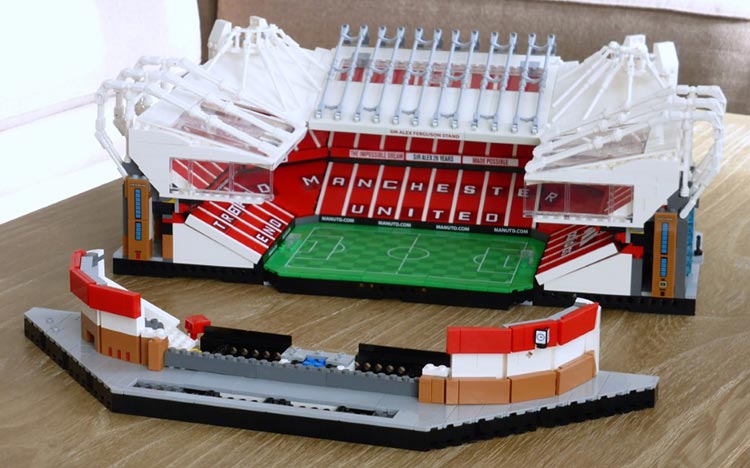
The final part of the set is built with bags numbered 17 to 21. After building a solid base out of the usual elements (Technic bricks, plates and tiles) we revisit a technique used in the large Sir Alex Ferguson stand to accommodate the corner stands.
First you build the outside of the corners, then you place 2 large bases at a 90 degree angle on which the corner stand supports will rest with just a plate with clip.
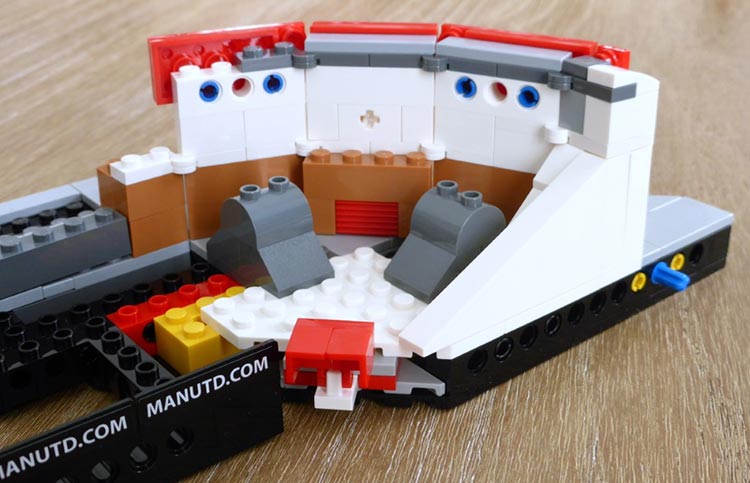
The grey axle that protrudes is then pushed back into the rear wall, effectively locking the two parts together. You can just see 2 yellow round plates and a red round tile covering the space that separates the façade from the structure.
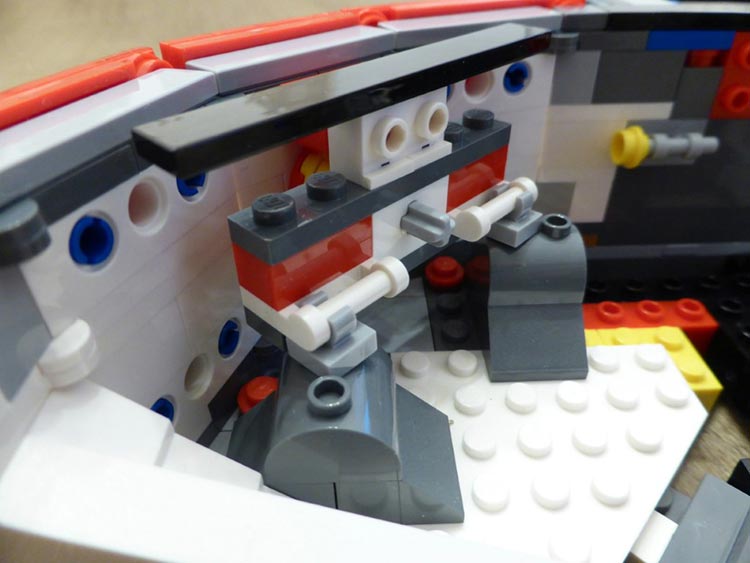
In the large stand this same structure is of course also somewhat larger and held in place by two 4L axles, but the principle is the same. The supports are now solid and the stands can be added.
Above the axle hole that holds receives the grey acle you can see the large clock that decorates this side of the stadium.
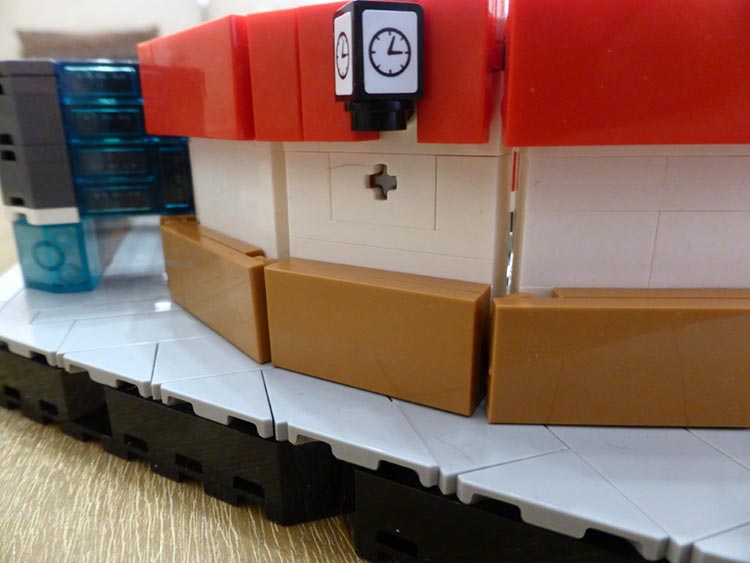
Next up you build the central part of the façade which leaves a tiled corridor going all the way through.
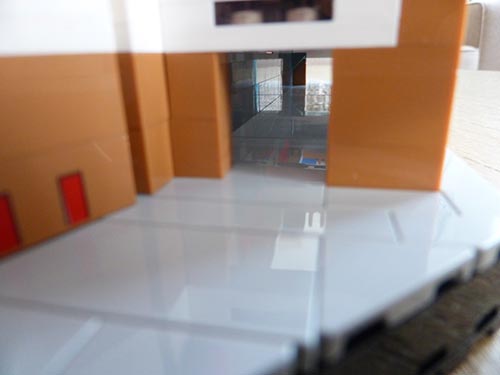
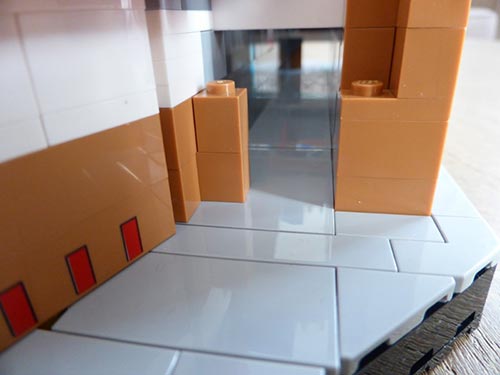
The old players' tunnel in the centro of the stand is the only part of the original stadium (from 1910) that has survived. However, there is a new players' tunnel in the southwest corner (right when looking at the stand from across the field).
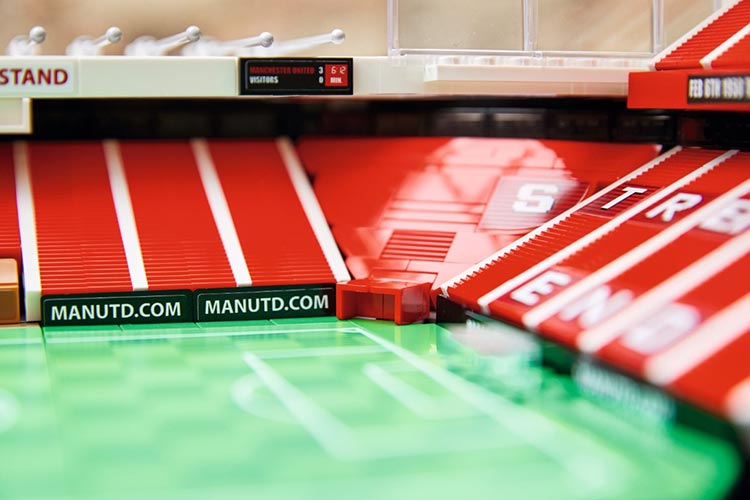
This stand has a single tier and so the roof is significantly lower than that of the rest of the stadium. I can't help but wonder how long it will be before this stand also gets a second tier and the whole stadium is brought to the same height. We'll worry about adapting the LEGO model to that height when that day arrives.
The final details are the players' bus—which gives you the beginning of an idea of the scale of this set—and the United Trinity, a statue of the Manchester United trio of George Best, Denis Law and Sir Bobby Charlton, who helped United become the first ever English club team to win the European Cup in 1968.
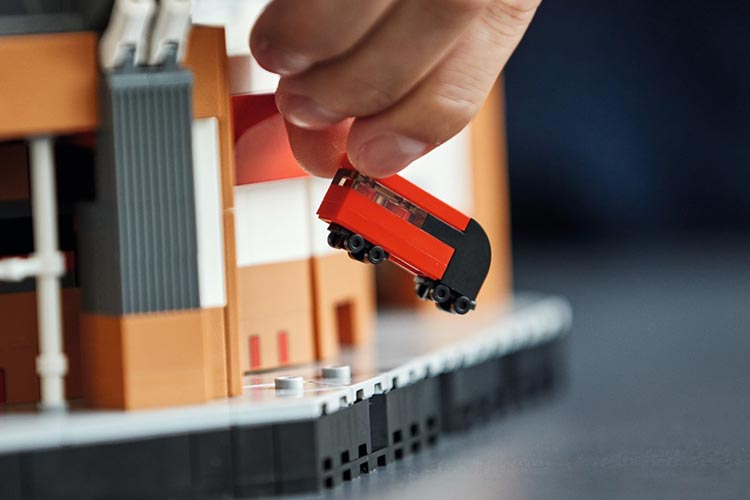
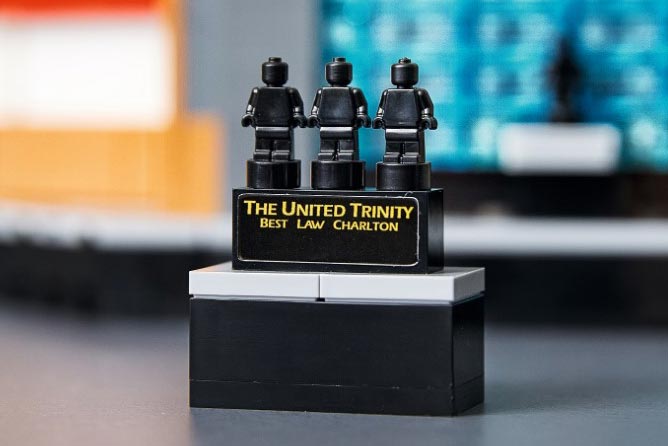
The finished stadium certainly is big. It's large enough to…well, not actually swing a cat, but certainly for a catnap.
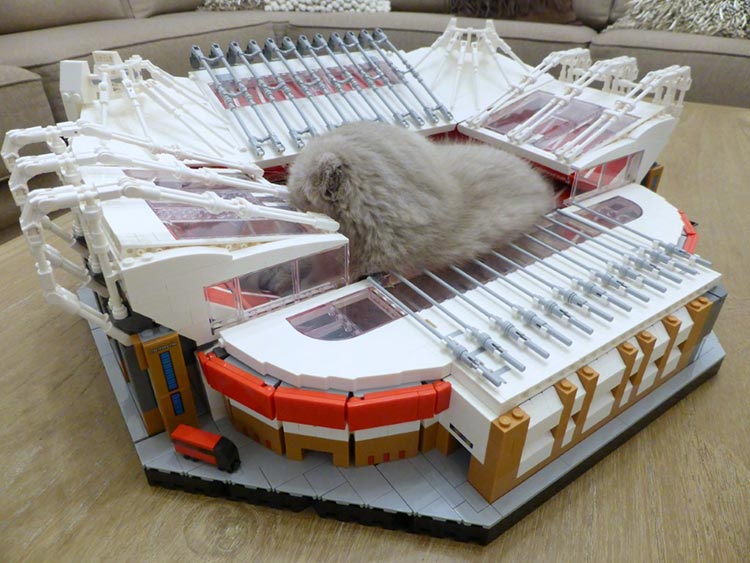
Conclusions
I'm not a football fan. When I started building this set I had some misgivings about whether I would like the model and enjoy the build. As it turns out I had a lot of fun building it (not in the least because I was assisted by my very eager 9-year-old daughter, who doesn't know the first thing about football, but is an avid LEGO fan) and I must say I quite like the finished model.
One of the strong points of the set is its modularity.
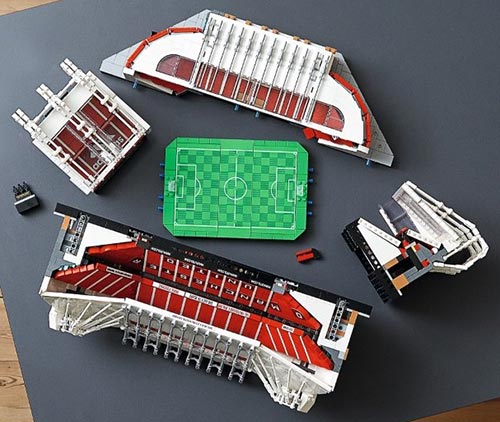

Not only does it make the building process more entertaining. It means the set is easier to manage and observe, allowing you to take out a section and see the interior details more easily. Of course it also makes the set easier to transport and store. This is especially important since this is definitely not a play set, but rather a display set.
The overall experience is enhanced by the details about the stadium provided in the instructions. Not only is there a timeline with the highlights of Man-U history, before each of the stand sections there is a short description of the stand and a (fun) fact.
I am not a big fan of stickers and this set contains 72. Even so, I didn't find the sticker use burdensome or excessive. Each sticker is justified and quite frankly, compared to applying large stickers to curved Technic parts, these stickers for straight flat pieces were a walk in the park.
I am still curious how the set will be received by non Manchester United football fans, but this set certainly gets a big thumbs up from me.
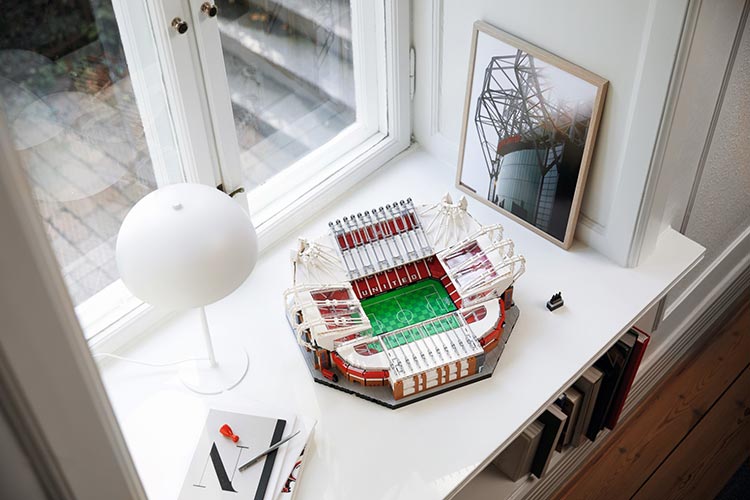
8824